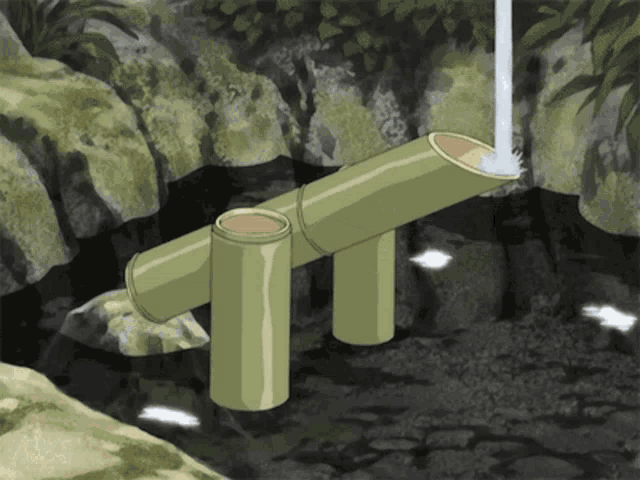“To know and not to do is not yet to know.” — Xunzi
“The safest road to Hell is the gradual one — the gentle slope, soft underfoot, without sudden turnings, without milestones, without signposts.” — C.S. Lewis
TL;DR
We wait to believe until we see, but by the time we see, it’s often too late. From Boston’s burst pipe to São Paulo’s drought to Ireland’s single river dependency, the lesson is the same: unseen vulnerabilities compound quietly until they collapse loudly. Once, our fear was après moi le déluge — after me, the flood. Today, it’s après moi le désert — after me, the desert.
When the Tap Ran Dry in Boston

“Gray Rhinos are both highly probable and high impact. The sooner we deal with them, the lower the cost. Unfortunately, the farther away they are, the lower the likelihood that we step up before they become more costly and our options become limited.” — Michele Wucker, The Gray Rhino
In spring 2010, Boston’s residents got an unscheduled lesson in fragility. A ten-foot-wide water main burst in Weston, Massachusetts — a pipe carrying most of the city’s drinking water from the Quabbin Reservoir. Overnight, nearly two million people were left without safe water.
While the rupture was sudden, the vulnerability was not. Years earlier, engineers had cautioned that Boston’s water network was heavily centralised — resilient in capacity, but fragile in dependency. When that single artery burst, the city discovered what “one point of failure” really meant.
For days, residents boiled water from backup sources and queued with jugs and kettles. Across the river, Cambridge carried on as usual; its water came from an independent system.
Luckily, the event was contained within a week, but it exposed how we rarely notice the systems that sustain us until they fail.
That’s the anatomy of a what Michele Wucker calls a Gray Rhino: obvious in hindsight, unheeded in foresight. The danger wasn’t that the pipe burst — it was that we waited for it to burst before paying attention.
The Stadium That Fills Too Late

“On an exponential curve, reaching a mere 1% adoption from 0.01% puts you halfway to 100%!” — Ray Kurzweil
Let’s run a quick Gedankenexperiment, a thought experiment in exponential growth.
You’re seated high in Wembley Stadium. On the pitch below, an official drops a single bead of water. After one minute, they drop two. Then four. Then eight. Each minute the drops double.
Now imagine the stadium is sealed — no drains, no leaks.
How long would it take to submerge Wembley entirely?
From the very first drop to the moment the stadium fills, it takes just 49 minutes!
Here’s the unsettling part. By the 45th minute, the water has only reached the lowest seats. By the time the people closest to the pitch realise there’s a problem, the remaining 90,000 spectators have four minutes left to escape.
That’s exponential change — imperceptible for forty-five minutes, irreversible in the final four.
But there’s a point here. Those same mathematics that fuel exponential growth can also describe exponential decay. The curve that once filled the stadium can just as easily empty it. The same dynamics that drive progress can quietly drain it away.
We always assume there’s more time than there is, until there isn’t.
The Drying of Giants

In 2014, both California and São Paulo faced a gray rhino. Reservoirs dropped to record lows. In São Paulo, engineers were forced to pump from what they called the “dead volume” — the thick sludge at the bottom of the Cantareira system, never meant for use.
It’s the equivalent of drinking the crusty limescale at the bottom of a kettle, or running a car so low on fuel that the sediment clogs the engine. You can do it but it doesn’t end well.
As Michele Wucker writes in The Gray Rhino: How to Recognize and Act on the Obvious Dangers We Ignore, “The water crisis that Californians had long known was looming became impossible to ignore in 2014… São Paulo had tapped the second of its three reserves and still had enough water only for a matter of weeks.”
It’s a pattern she and I discussed when Michele joined us on The Innovation Show: the biggest threats are rarely surprises — they are slow-motion collisions we choose to ignore.
Nestlé’s former chair, Peter Brabeck, once warned that we are “running out of water today.” He pointed out that while access to water for drinking and hygiene is a human right, that accounts for barely 1.5 percent of global use. The remaining 98.5 percent — consumed by industry, energy, and agriculture — is treated as if it were infinite.
“When something priceless has no price,” Brabeck said, “human behaviour treats it as worthless.”
Brabeck argued that water scarcity lies at the nexus of three inseparable systems — food, energy, and water. We burn water to make fuel, and we burn fuel to move water. Each dependency feeds the next until the curve bends towards collapse.
He called it the most urgent arithmetic of our age: we have 120 years of proven oil reserves, but we are running out of water now. The maths is exponential, not linear. Depletion happens the way collapse always does — first slowly, then all at once. For years, the reservoir looks steady, until one season tips it past the point of return.
The problem isn’t malice or stupidity. It’s a mix of blindness, comfort, and assumption — the quiet belief that because water has always flowed, it always will. Most people don’t even see the rhino charging, so no one even knows we have to move.
And this isn’t a criticism. Prevention rarely earns applause. Reward systems are designed for crisis response, not foresight. There are no headlines for the disasters that don’t happen. No medals for what you avert.
That’s why John F. Kennedy wrote Profiles in Courage — to honour those who act before the crowd understands why it matters. The courage to prevent is quieter than the courage to repair, but history depends on both.
And now, the same story unfolds in my homeland.
Ireland’s Slow-Emptying Future

“Our financial, political, and social structures often encourage risky behaviour and willful ignorance of threats. The biggest challenge is the set of incentives and psychological biases that favour short-term thinking over long-term strategy.” — Michele Wucker, The Gray Rhino
Eighty-five percent of the Greater Dublin Area’s water comes from a single source — the River Liffey — through two treatment plants. One prolonged drought, one contamination, and the taps could run dry within days.
Forecasts show the region will need 34% more water by 2044. The Water Supply Project — Eastern and Midlands Region will eventually bring treated water from the River Shannon’s Parteen Basin to Dublin, feeding towns along the way.
It’s an ambitious plan — but also an admission. We are not acting out of foresight, but out of necessity.
As Andy Grove once said, “Snow melts from the edges.” The first signs of change — or decay — always appear at the margins. By the time the centre feels the heat, the edges have already turned to dust. Dublin may not yet feel parched, but the early signals are already there: longer summers, heavier rainfall that runs off too fast, and reservoirs that take longer to refill each year.
And yet, what captures our headlines?
Last December, The Guardian reported: “Guinness raids its Irish reserves to ease UK shortages amid Gen Z demand.”
The story trended for days. Dublin’s brewing tanks were running low, and that — not the falling river levels — sparked concern.
It’s a neat parable of modern attention. The Guinness shortage was temporary; the water shortage won’t be.
We react to the visible and the viral, not the structural and the slow. A headline about stout scarcity travels faster than a warning about an empty reservoir — until the pipes run dry and the story writes itself.
Once, our fear was après moi le déluge — after me, the flood. Now, as rivers thin and rainfall shifts, it’s après moi le désert.
The metaphor of the stadium still holds — only now it’s emptying, not filling. Each minute, a little more drains away. Exponential decay follows the same curve as growth — only inverted. We notice only when the echo of abundance has gone silent.
When it comes to the Shannon, the Liffey, or any system we depend upon, the rhino is already charging. The question is whether we’ll learn before it hits.
The Gentle Slope

“The safest road to Hell is the gradual one — the gentle slope, soft underfoot, without sudden turnings, without milestones, without signposts.” — C.S. Lewis
In Japanese gardens, a shishi-odoshi — a bamboo water fountain — fills slowly, then tips suddenly, striking a rock with a hollow clack. Its purpose is not just aesthetic. It’s designed to scare away the animals that graze too close — a rhythm of calm punctuated by regular warnings.
Organisations, too, can live by such rhythms. The sound of change rarely remains silent; we simply stop listening or choose not to hear.
Knowledge without action is a kind of slow suicide.
Because by the time we believe it, it’s already too late.
The latest episode of The Innovation Show with Samuel Arbesman on his trilogy of books. It was my reading of his book and our resulting conversation that inspired me to write this Thursday Thought on unseen errors, exponential decay, and the dangers of waiting until the water is at our knees before we start to move.
In Overcomplicated, he argues that our systems — from aircraft software to financial markets — have grown so entangled that even their creators can no longer fully comprehend them. The behaviour of our technologies now mirrors the behaviour of nature: unpredictable, emergent, and often humbling.
We talk about why the same forces that make technology powerful also make it fragile, why our old mental models for managing complexity no longer work, and why the future demands not perfect understanding, but humble navigation.
https://medium.com/media/47a9709fe29c099887b353ca9889bd9b/hrefhttps://medium.com/media/e23a1e3e0be82ad189cfc22586023926/href
Après Moi Le Désert: Believing It When We See It: Ireland’s Slow-Emptying Future was originally published in The Thursday Thought on Medium, where people are continuing the conversation by highlighting and responding to this story.